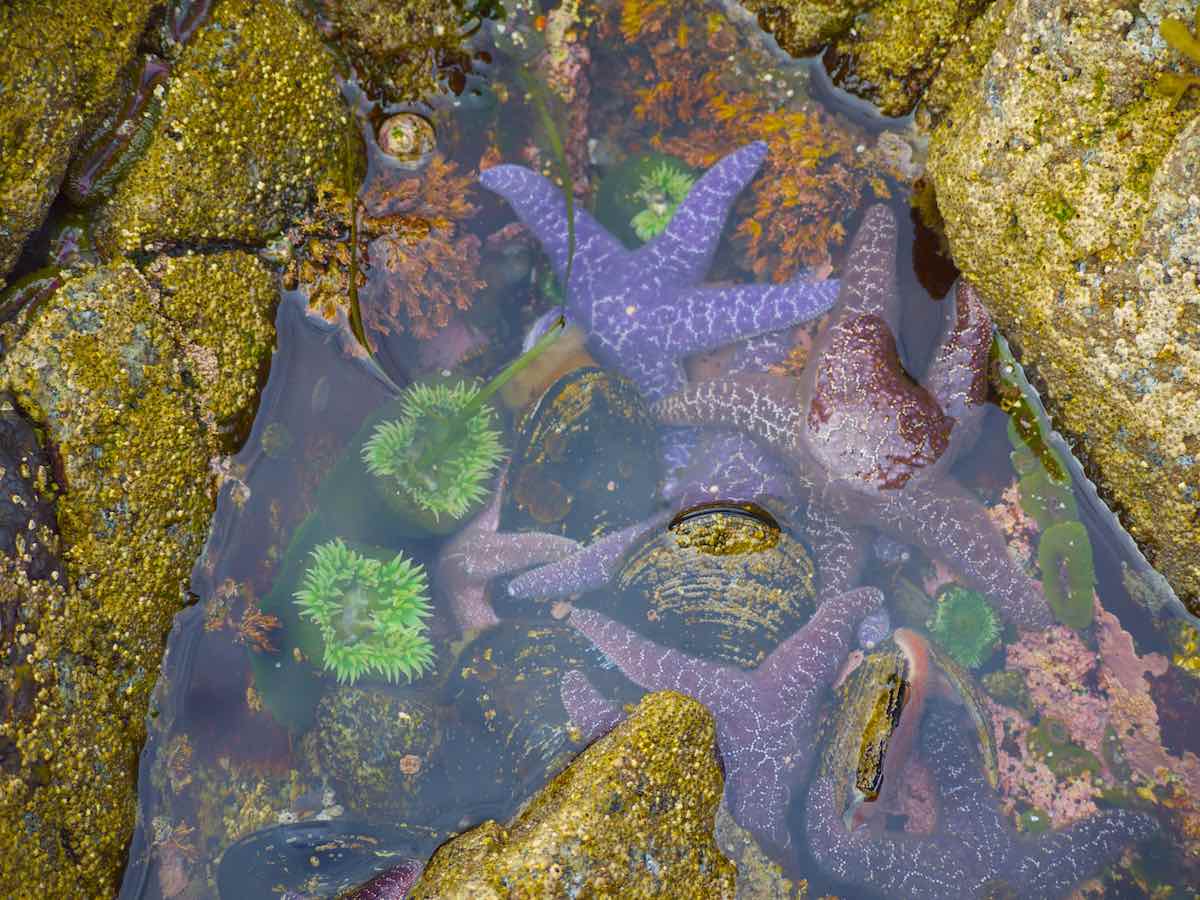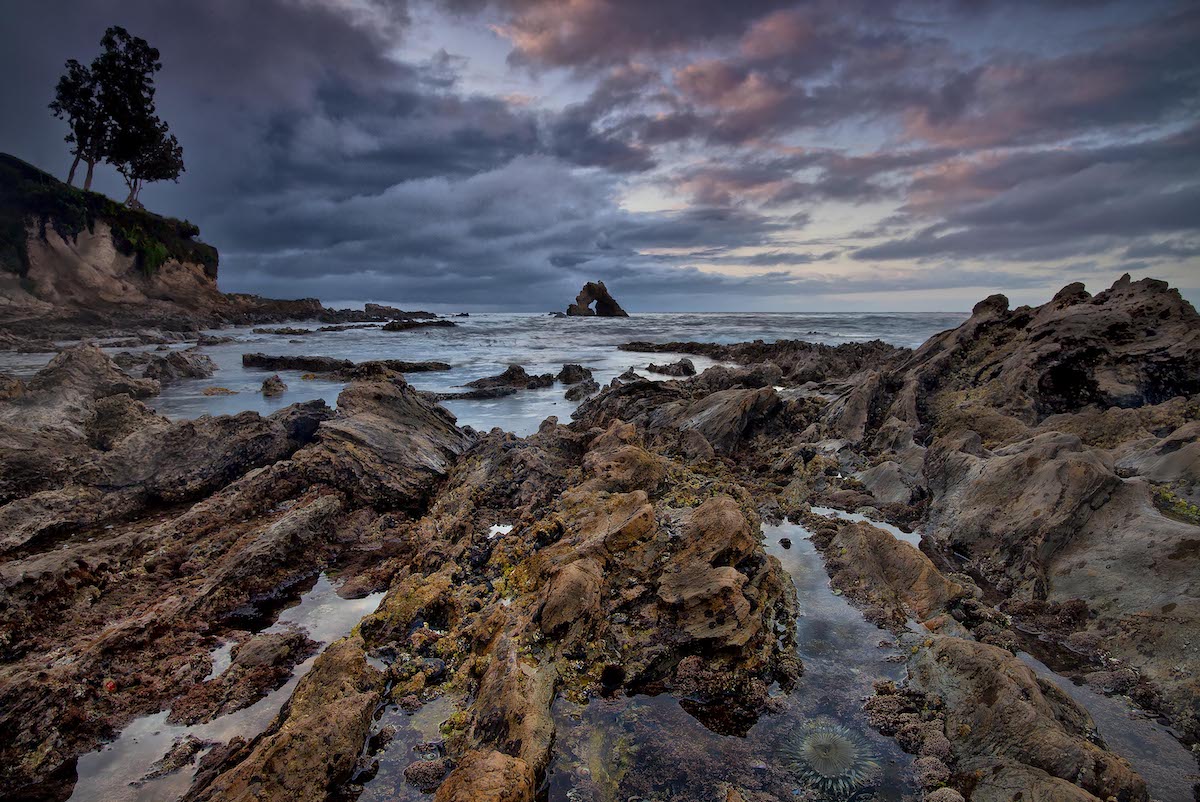What are Tide Pools?
Published by Ocean Conservancy
Most beach-goers will recognize the shallow pools that emerge during low tide that contain ocean animals like barnacles, crabs and sea stars. For many people (including myself!), their earliest exposure to the ocean was through playing in tide pools, searching for critters to discover. But how much do you actually know about tide pools? Read on to learn what tide pools are, how they form and how animals survive and thrive in them.


What are tide pools? How do they form?
Tide pools are small pockets of water that form during the tidal cycles. Every day, the gravitational pulls of the sun and moon cause changes in sea level called tides. The area of the shore that is more exposed during low tides and covered during high tides is called the intertidal zone, and this is where you find tide pools! When the ocean recedes during low tide, some water remains trapped in holes, slopes and cracks on the shore. Any animals that were in that water get trapped too—at least until high tide!
Who lives in tide pools?
Life in a tide pool isn’t easy. Although it might seem like a cozy spot for an ocean animal to nestle down, they can leave animals exposed to predators and other threats. First, tide pools can get pretty toasty with the sun beating down on them for hours during the day, so animals need to be able to withstand warm temperatures (and big temperature changes). Second, oxygen levels can drop over time without the flow of fresh seawater. Lastly, tide pools are the perfect place for predators to hunt for a snack—it’s hard for the prey to escape! Sea birds, crabs and other predators can walk from pool to pool, looking for their next meal.
So, which animals are hearty enough to survive the tide pool thunder dome? In high intertidal zones, or ones that are furthest away from the sea line at high tide, you’ll find many animals who have shells that can help them withstand the sun and waves. That includes mussels, barnacles, snails and crabs. Middle intertidal zones get a little more time under the water, and includes animals like sea stars, urchins and sea anemones.


Where can I find tide pools?
Tide pools can be found in mudflats, sandy beaches and rocky shorelines (where there are lots of crevices in the rock). In fact, some of the United States’ best tide pools are on rocky coasts, like in the Olympic Peninsula, Monterey Bay and Acadia National Park. Tide pools are an amazing way to see sea life up close, but it’s important to do so in a way that is respectful to the animals and ecosystem. Here are a few tips, courtesy of the National Oceanic and Atmospheric Administration (NOAA) for enjoying tide pools:
- Check out when low tide is in your area online. The best time to visit tide pools is at low tide!
- Wear shoes with a good grip, as rocks can be dangerously slippery during low tide.
- Avoid touching plants or animals. Be careful where you walk so as not to crush any critters or disturb small rocks.
- Always bring a bag along to collect trash you see on the beach! While you’re at it, check out Ocean Conservancy’s Clean Swell app to track your beach-cleaning progress.
Happy tide pool exploring!


Sign up for our emails!
The post What are Tide Pools? appeared first on Ocean Conservancy.
Read the full article at: https://oceanconservancy.org/blog/2020/02/25/tide-pools/



